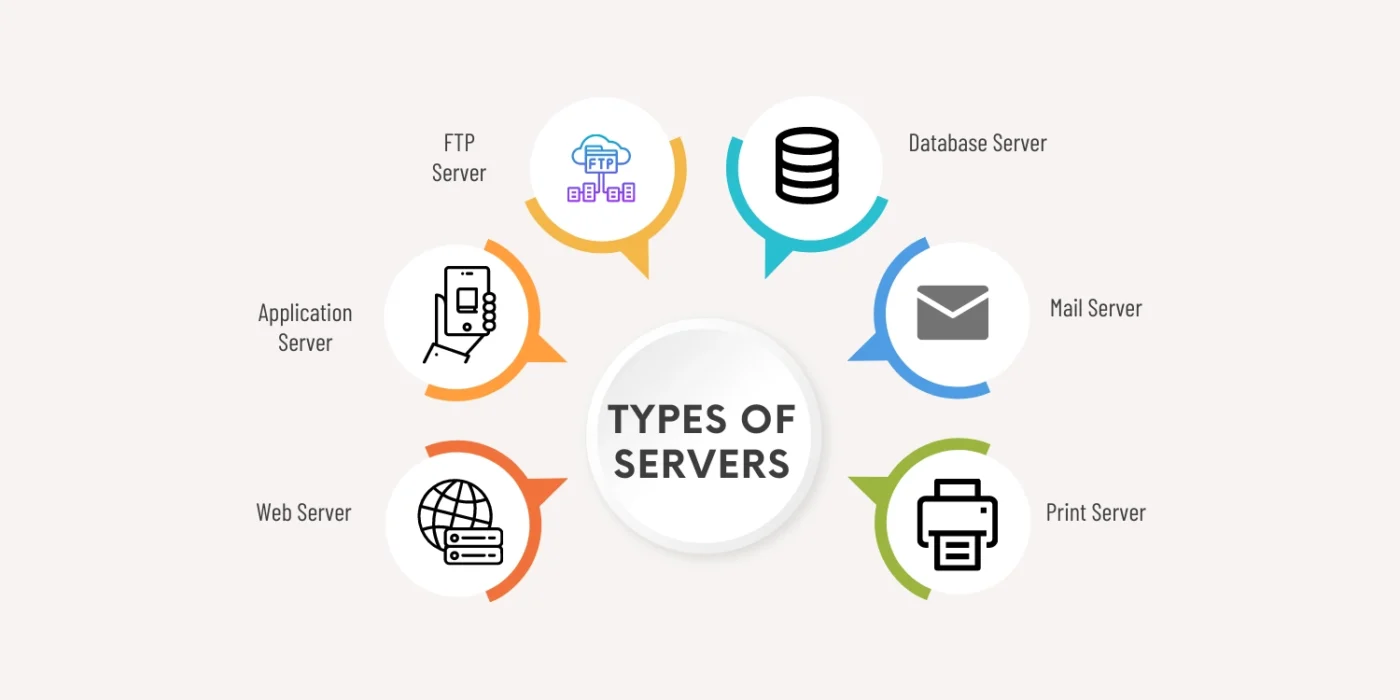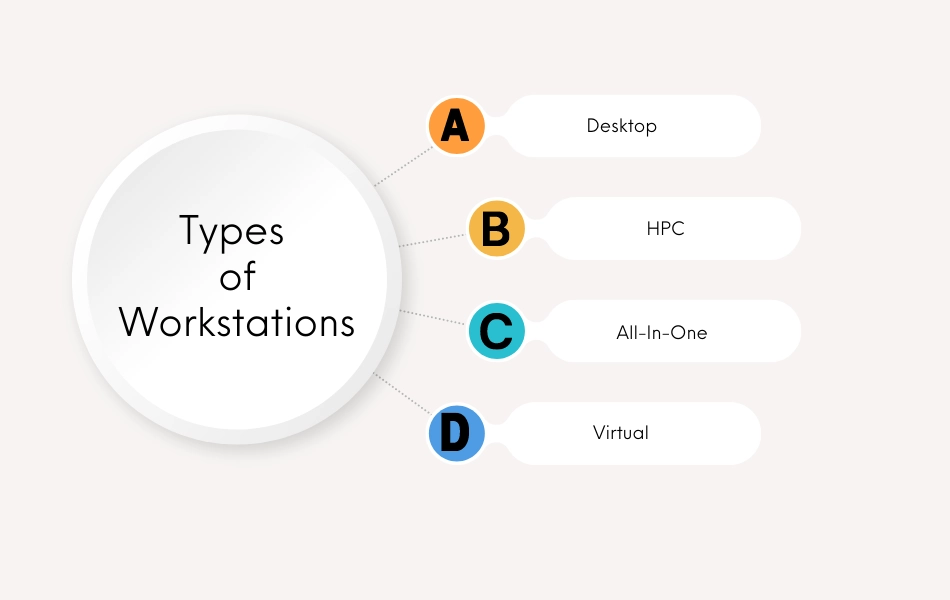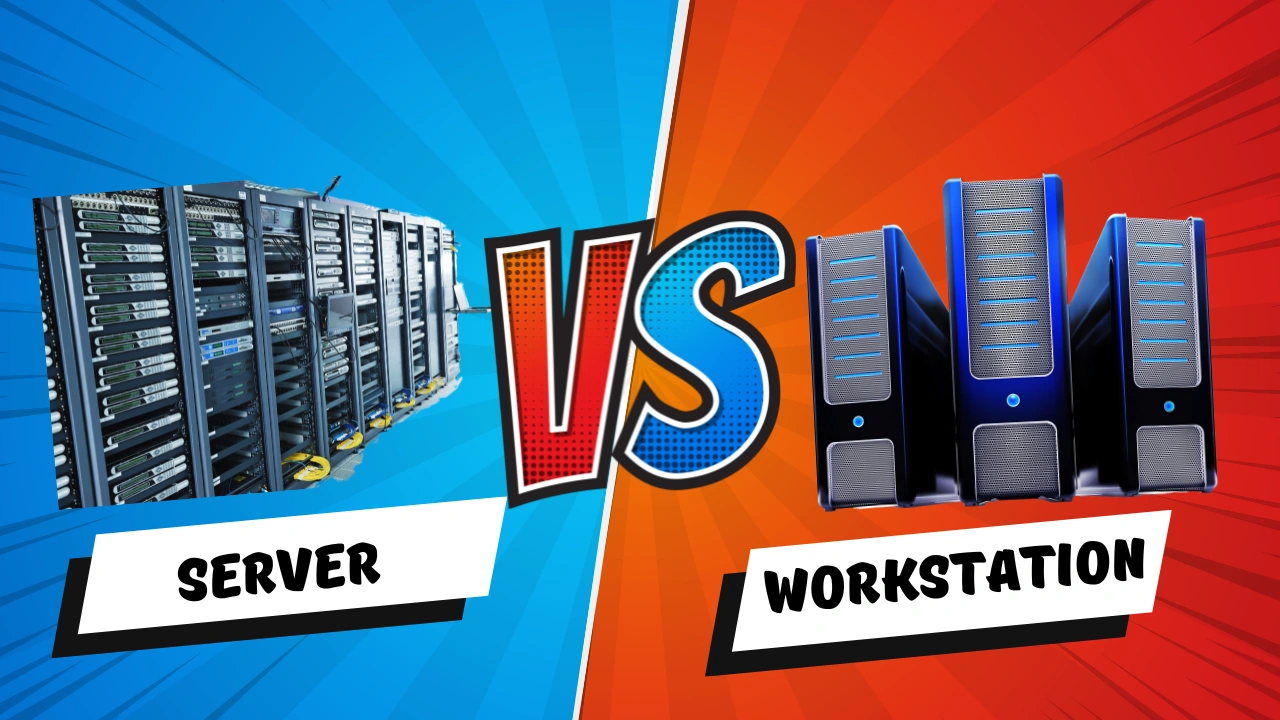Understanding when to utilize a server and when to use a workstation isn’t always obvious for many non-technical firms. Although workstations and servers all rely on hard drives, RAM, processors and network adapters as part of their fundamental hardware, organizations must realize that the two are truly separate components of a company’s IT hardware architecture and are built for quite different purposes.
In this blog, we will discuss the differences between servers and workstations. Both serve distinct functions. In general, a server is a computer program that receives and responds to network requests. On the other hand, a workstation is a single-purpose computer designed for technical or scientific purposes. There are numerous distinctions between servers and workstations. Both are intended to serve specific functions. A workstation cannot be a server, but a server can be a workstation.
What is a Server?
To define it simply, a server is any kind of computer that distributes data with other computers. Different server types provide diverse services to networks of varying sizes. To put it another way, a server can act and appear in many distinct ways. For example, hard drives, software or computers take on various forms but all perform the same function. Receiving, storing and sharing data is a server’s primary purpose; it can be compared to an electronic filing cabinet. Servers are crucial to a company’s ability to network and interact.
What is a workstation?
A workstation is a high-performance computer designed for demanding technical and creative applications. Unlike a standard desktop computer, a workstation is optimized for tasks such as 3D rendering, scientific simulations, and video editing. Workstations typically feature powerful processors, large amounts of memory, and high-end graphics cards. Additionally, they may also offer advanced features such as ECC(Error Correction Code) memory, multiple CPU sockets and hardware-accelerated 3D graphics. Workstations are used by professionals in fields such as engineering, architecture, film and video production and finance, among others. If you require a computer that can handle demanding software and workloads, a workstation may be the right choice for you.
Difference between server and workstation
Now let’s examine the distinction between a server and a workstation. The comparison table below can help you understand the differences between workstations and servers.
|
Basic
|
Servers are designed to provide resources and services to other devices on a network. |
Workstations are designed for high-performance computing tasks for individual users or small groups. |
|
Structure
|
A server is designed for high-performance computing and data storage with multiple CPUs and storage. |
A workstation is designed for individual use with high-end processing power and graphics capabilities. |
|
Operating system
|
A server typically runs a specialized operating system optimized for network services. |
A workstation runs a general-purpose operating system optimized for individual productivity. |
|
Graphics User Interface (GUI) |
GUI is optional for a server. |
A GUI is often installed on a workstation. |
|
Reliability
|
Servers are designed to provide high reliability and uptime. |
Workstations prioritize user productivity over reliability. |
|
Usage
|
A server is used to provide services and resources to other computers or devices. |
A workstation is designed for individual use and generally used for tasks like software development, content creation, and office productivity. |
|
Example
|
Web servers, application servers, etc. |
Personal computers, laptops, and gaming computers. |

Types of Servers
There are different types of servers, and each type is employed for a particular type of task
Web server
Information for the internet is stored on web servers and is retrieved using “HTTP” headers and by requesting the files stored on online servers before being transferred to your web browser. Public domain software is used to access the internet through an open-source web server.
Application server
Application servers are the best choice for corporations because they can efficiently host big amounts of application data to numerous users at once. Through virtual server connections, these servers link clients to software programs. This enables users to access applications without downloading data to their own hardware.
File Transfer Protocol (FTP) server
To transfer files from one computer to another, FTP servers are utilized. In order to connect computers to each other securely and transfer data, this process is known as the file transfer protocol.
Database server
A database server is a computer system that centralizes data storage and management. It acts as a hub for storing and organizing large amounts of structured data, making it easily accessible and retrievable for various applications and users. Database servers are used in many industries to store important information, from customer data in retail to financial transactions in banking.
Mail server
A mail server is a computer system that manages email communication for a network. It routes incoming and outgoing messages to the right recipients and can be accessed by users to send and receive email from any device with internet access. Different types of mail servers include POP, IMAP, and SMTP servers. Setting up a mail server requires choosing a suitable platform and configuring it to meet specific requirements, including security measures. A mail server is a good option for businesses that need a scalable and secure email solution.
Print server
A print server is a device that allows multiple computers to share a single printer on a network. It acts as an intermediary between the computers and the printer, receiving print jobs from multiple sources and directing them to the printer. This allows multiple users to access the printer simultaneously, improving efficiency and reducing costs compared to having separate printers for each computer.

Types of Workstations
Workstations come in many varieties and are utilized for distinct types of tasks. Workstations for video and audio are a couple of examples. A studio can be built using sound cards, synthesizers and microphones, or video editing can be done using digital video connections and hard disc arrays. For nonlinear digital video editing, a video workstation is employed.
There are several types of workstations available, each designed for different purposes and applications. Some of the most common types of workstations include:
Desktop Workstations:
These are traditional workstations that resemble desktop computers, but with more powerful components and advanced features. They are ideal for tasks such as 3D modelling, video editing, and scientific simulations.
High-Performance Computing (HPC) Workstations:
These workstations are designed for use in scientific and engineering applications that require high levels of processing power and memory. HPC workstations often feature multiple CPU sockets, large amounts of RAM, and hardware-accelerated graphics.
Virtual Workstations:
These are cloud-based workstations that allow users to access their applications and data from any device with internet access. They offer the convenience of remote access, combined with the performance of a high-end workstation.
All-in-one Workstations
These workstations combine the computer and monitor into a single, compact unit. They are ideal for space-constrained environments, such as small studios or home offices.
When choosing a workstation, it is important to consider your specific needs and requirements. Different types of workstations may be better suited to different tasks and applications, so be sure to choose one that fits your needs.
Conclusion
In conclusion, servers and workstations are two essential components of a company’s IT infrastructure. While both rely on similar hardware components, they serve different functions and are optimized for specific tasks. Servers are primarily used to store and distribute data across a network, while workstations are designed for demanding technical and creative applications. Understanding the differences between servers and workstations is crucial for organizations to make informed decisions about which hardware to use for specific tasks. With this knowledge, companies can optimize their IT infrastructure to increase efficiency and productivity, ultimately leading to improved business outcomes.
